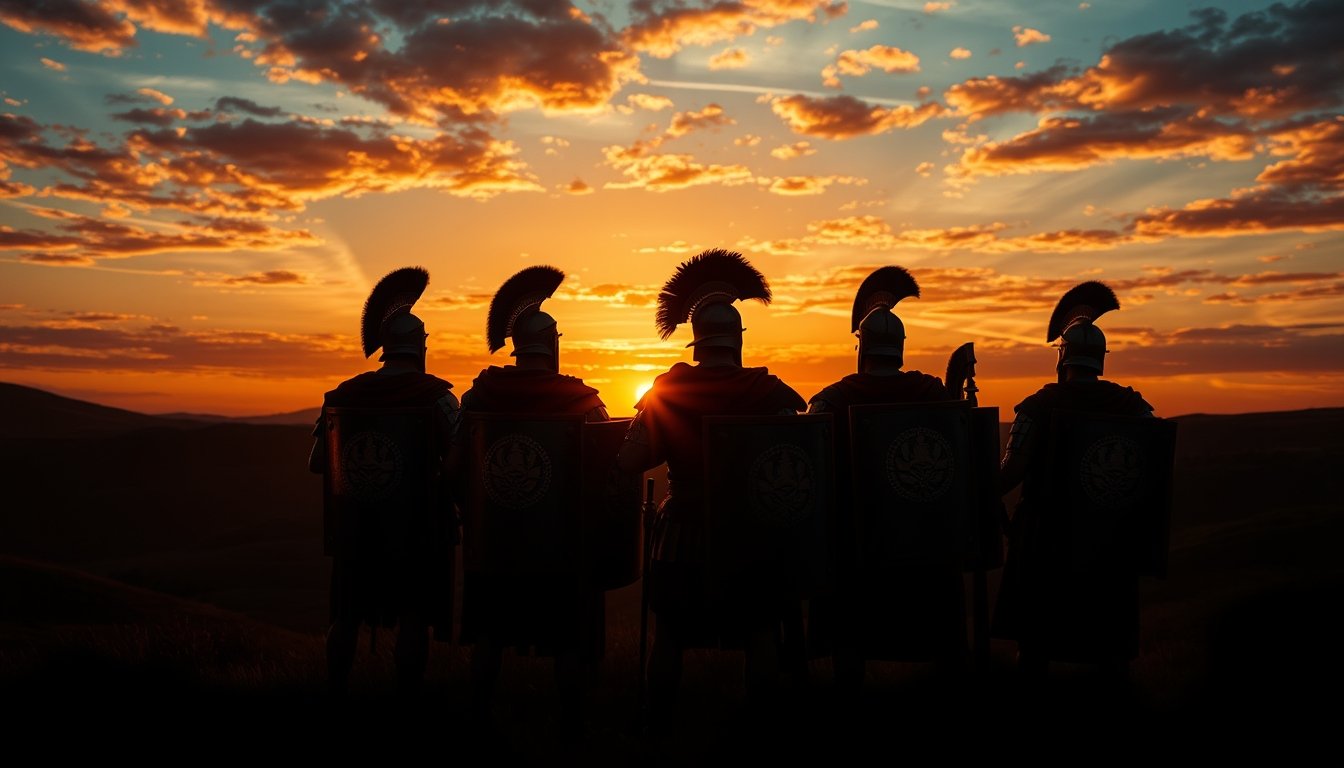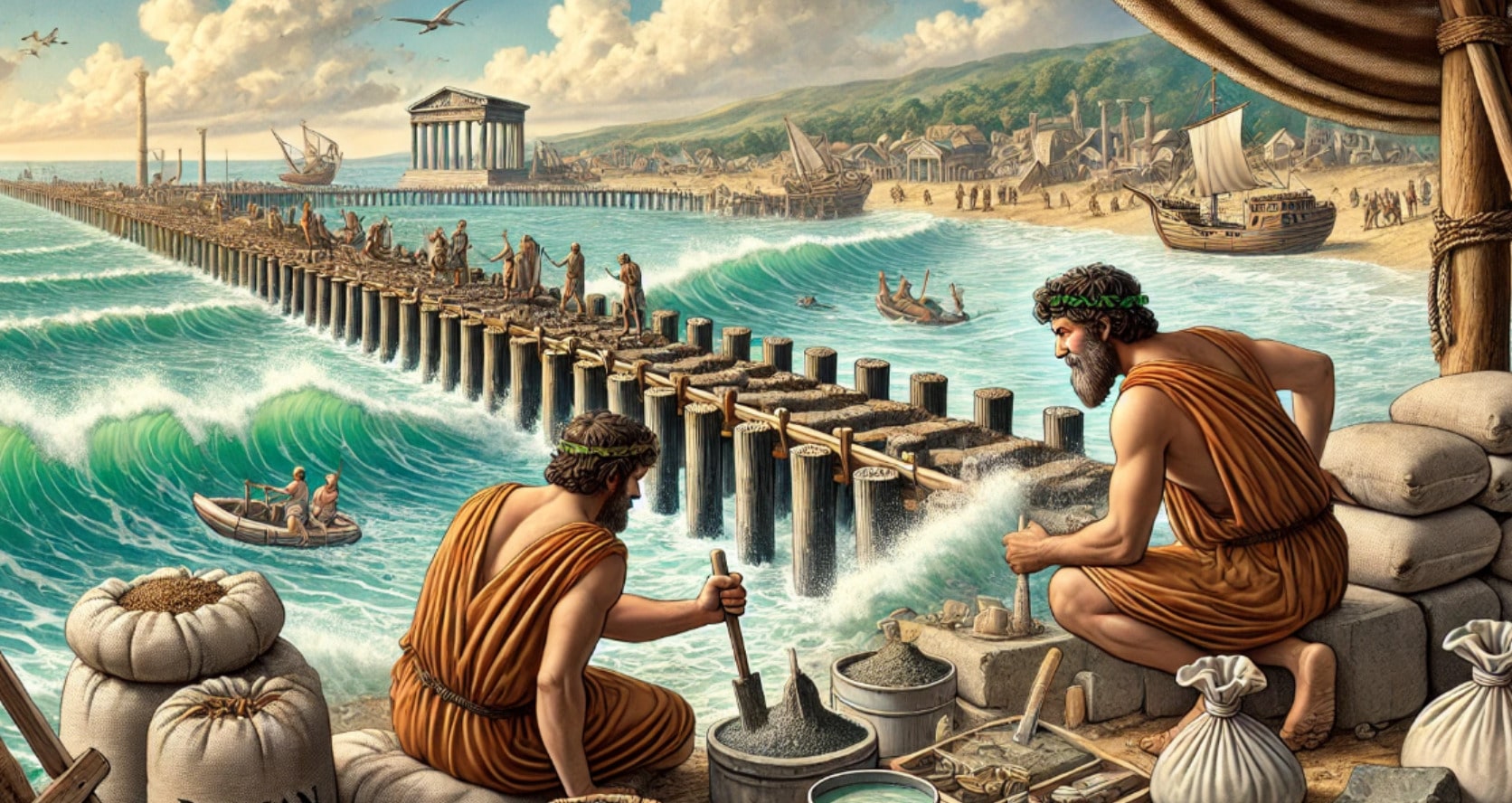In the ancient world, few armies inspired as much fear and respect as the Roman legions. Their efficiency was not the result of chance but of rigorous training, innovative weaponry, and a military strategy that left its mark on history.
For centuries, the legions were the driving force behind the conquests that took the Roman Empire to its maximum extent, stretching from modern-day England to the far reaches of the Middle East. In this video, we will explore how the Roman legions became an almost invincible war machine.
The organization of the legions
The structure of a legion was key to its success. Each legion was composed of approximately 5,000 soldiers, divided into ten cohorts. Each cohort was subdivided into centuries, each consisting of around 80 legionaries commanded by a centurion.
This hierarchical organization allowed for incredible discipline and coordination. The centurions, experienced and respected leaders, were the backbone of the legion.
They were responsible for maintaining order, morale, and overseeing the training of their men. A good centurion had to be not only brave but also an expert in military tactics.
The importance of this structure went beyond simple order; it facilitated quick decision-making on the battlefield and ensured that every soldier knew his role at all times.
Additionally, the legions had high-ranking officers, such as tribunes and the legate, who were responsible for overall strategies.
Thanks to this organization, the legions operated like a well-oiled machine, capable of adapting swiftly to the most adverse circumstances.
Rigorous training
The training of a Roman legionary was one of the most intense and comprehensive in military history. It was said that “sweat saves blood,” a philosophy that commanders followed to the letter. Soldiers trained every day without exception. They undertook forced marches of up to 30 kilometers, carrying armor weighing around 30 kilograms, along with their weapons and equipment.
These exercises not only improved their physical endurance but also prepared them for the long marches often required in military campaigns.
The training was not limited to physical conditioning. The legionaries practiced combat techniques with the gladius, the short sword used in close combat.
They learned to fight in tight formations and defend as a group, perfecting the use of the scutum, the large, curved shield they used to protect themselves and their comrades. They were also taught how to quickly build fortified camps, giving them a strategic advantage during campaigns.
Discipline was the cornerstone of Roman training. A soldier who disobeyed orders or committed serious errors was severely punished. Sanctions ranged from reduced food rations to corporal punishment or even execution in extreme cases. However, there were also rewards. Brave and loyal legionaries could rise in rank and receive bonuses or land upon retirement.
All of this fostered an environment of competition and camaraderie.
The weapons of a legionary
A legionary’s equipment was designed for both offense and defense. Each soldier carried a gladius, a short and lethal sword perfect for close combat. With a blade of about 60 centimeters, the gladius was ideal for stabbing and cutting with force, mainly used in tight formations.
Before engaging in close combat, legionaries would throw the pilum, a javelin designed with a soft metal tip that bent upon impact. This made the pilum penetrate enemy shields and become unusable, preventing the enemy from throwing it back.
The scutum, the rectangular shield carried by soldiers, was a fundamental tool in defensive formations. With its curved shape and large size, the scutum provided exceptional protection and was used to bash and destabilize opponents.
Additionally, the legionaries wore a segmented armor called lorica segmentata, which offered great defense without compromising too much mobility. All the equipment was designed to maximize combat efficiency and ensure the soldier’s survival.
Battlefield strategies
The success of the Roman legions was not only due to their weaponry and discipline but also to their brilliant tactics. The legions were known for their highly organized formations, which could quickly adapt to changing battlefield conditions.
One of the most famous formations was the “testudo,” or tortoise formation, where soldiers raised their shields to protect themselves from enemy projectiles, creating an almost impenetrable shell. This tactic was especially useful during sieges and under a barrage of arrows.
Another tactic was the “wedge,” a triangular formation designed to break through enemy lines with force and precision.
The Romans were also masters at using terrain to their advantage and deceiving the enemy with false maneuvers. Even when outnumbered, the legions could hold their ground and emerge victorious thanks to their ability to maintain order and morale.
The leadership of generals also played a crucial role. Figures like Julius Caesar and Scipio Africanus were brilliant strategists, capable of turning disadvantages into crushing victories.
Their meticulous planning and use of military engineering, such as building forts and trenches, gave them a tactical edge that few enemies could match.
The life of a legionary
Being a legionary was not just about fighting and conquering. In times of peace, the soldiers were builders. They constructed bridges, roads, and aqueducts that can still be seen today.
The construction of roads allowed the Empire to move troops quickly and facilitated trade, contributing to economic growth. However, the life of a legionary was harsh and full of sacrifices.
They spent long years away from home, facing diseases, extreme weather, and the constant danger of war.
Morale and camaraderie were essential. The legions functioned like a brotherhood, and camp life was a blend of discipline and routine. Soldiers slept in tents, ate rations of bread and meat, and participated in religious rituals to invoke the protection of the gods.
The bravest and most loyal were rewarded with land upon retirement, ensuring a prosperous future.
The legacy of the legions
The Roman legions not only conquered territories but also spread Roman culture, leaving a lasting legacy in architecture, engineering, and law. The network of roads they built facilitated communication and trade, and many of those roads are still in use today.
The influence of the legions also extended to military engineering, which has inspired modern armies.
Despite the fall of the Roman Empire, the tactics and strategies of the legions are still studied and admired. The history of Rome is a reminder that discipline, organization, and innovation can change the world.
The Roman legions were not just soldiers; they were a force that forever changed the ancient world. If you enjoyed this article, feel free to share it for more fascinating stories from the past. Stay tuned for more insights into history!



